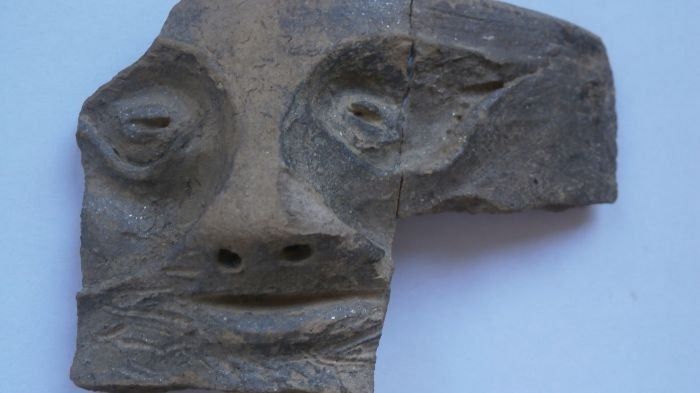Post by UKarchaeology on Sept 28, 2015 0:47:20 GMT

This mask of a satyr, a male companion of wine god Dionysus with equine features, which is in fact a fragment from a ceramic vessel, has been found during the 2015 summer excavations of emporium Pistiros near Vetren in Southern Bulgaria, an ancient Greek trading post deep into the territory of the ancient Thracian Odrysian Kingdom, which saw its height in the 4th century BC [Credit: Kmeta]
A mask of a satyr, a male companion of ancient wine god Dionysus with horse-like features, has been discovered by archaeologists near the town of Vetren in Southern Bulgaria during the 2015 summer excavations of Pistiros, an ancient Greek emporium, i.e. a trading post, inside what once was the Ancient Thracian Odrysian Kingdom.
Pistiros was set up as an emporium by Ancient Greek merchants from the Aegean Island of Thasos in the 5th century BC, and saw its height in the 4th century BC under the protection of the Thracian Odrysian Kings. It was destroyed in 279-278 BC by the Celts, and never recovered as an emporium; an ancient Thracian metallurgical settlement was built there in its stead. The ruins of emporium Pistiros were discovered in 1988 by Polish-Bulgarian archaeologist Mieczyslaw Domaradzki.
The satyr mask from emporium Pistiros was been found on a fragment from a ceramic vessel, report local news site Kmeta. It was been discovered by archaeologist Gavrail Lazov from Bulgaria’s National Museum of History in Sofia. This find is unique for Bulgaria,” says Valentina Taneva, Director of the Mieczyslaw Domaradzki Museum of Archaeology, also known as the Septemvri Museum of Archaeology, in the southern Bulgarian town of Septemvri, who is also among the participants in the digs.
(pics/source: archaeologynewsnetwork.blogspot.co.uk/2015/09/satyr-mask-discovered-in-southern.html#.VgiNOZfqiKI )
